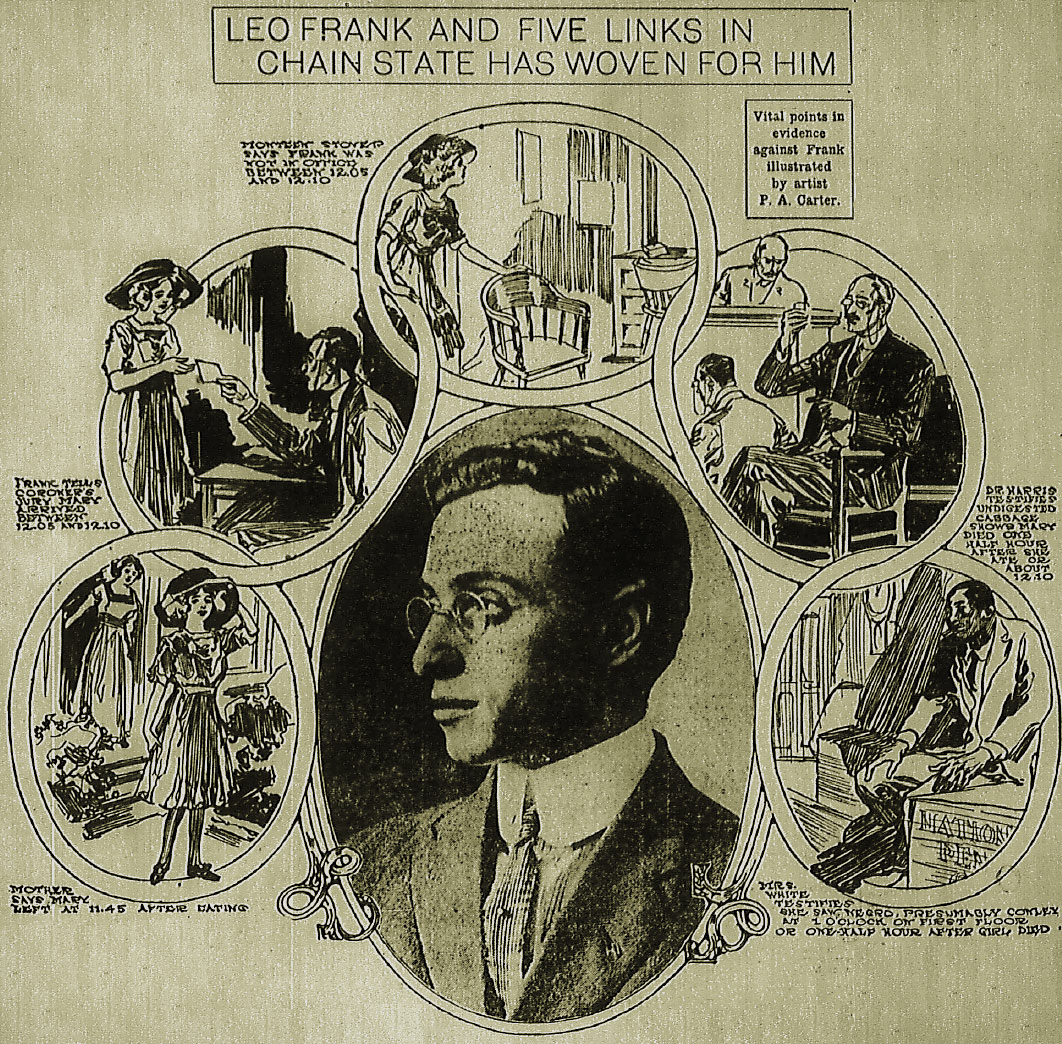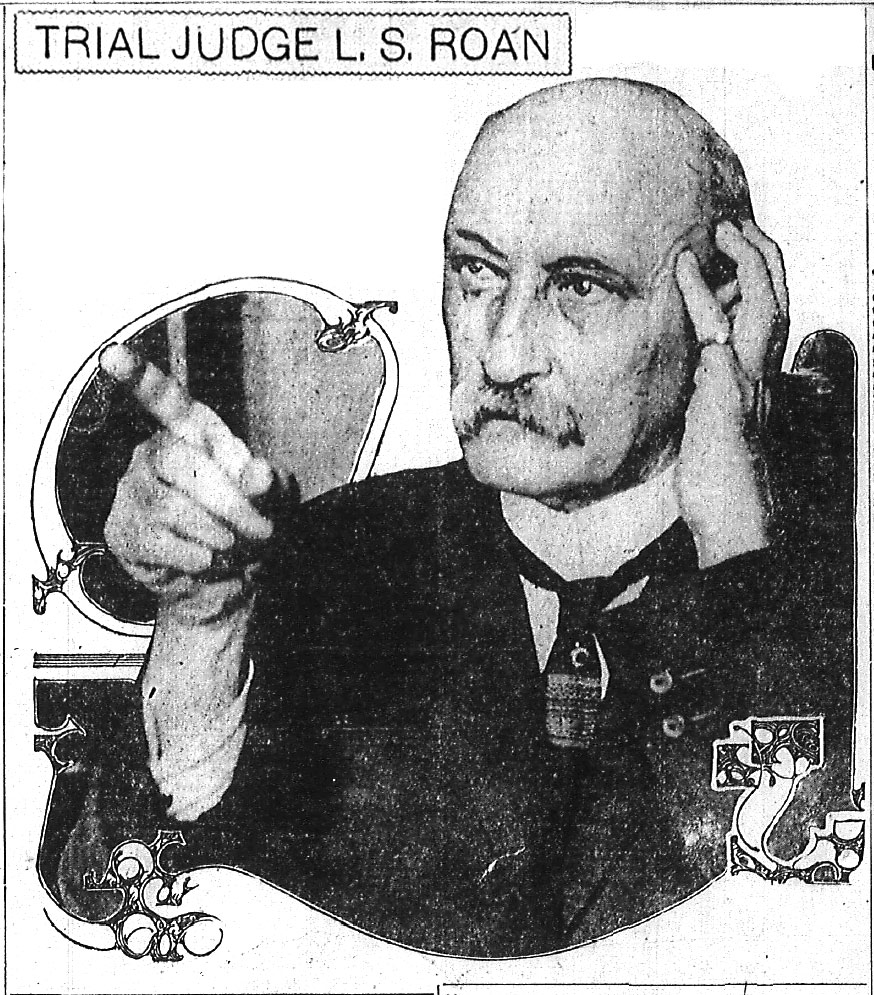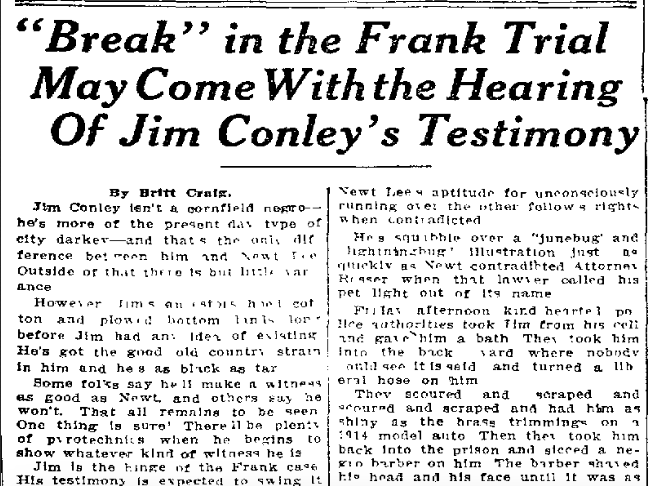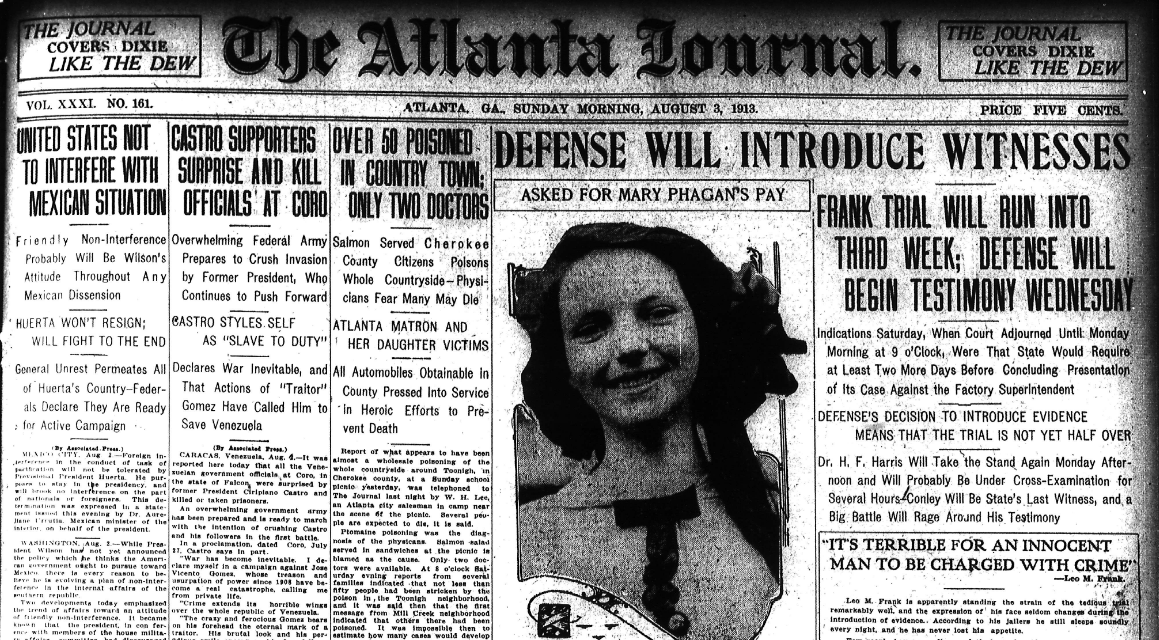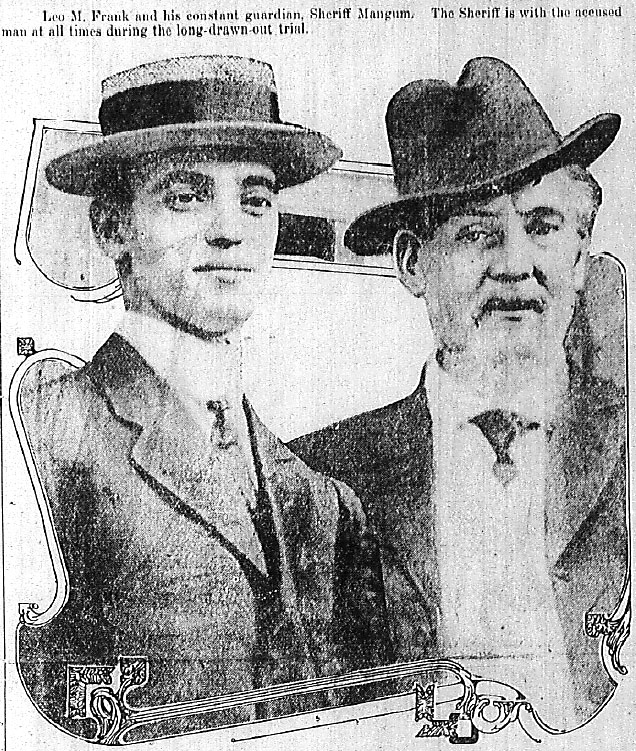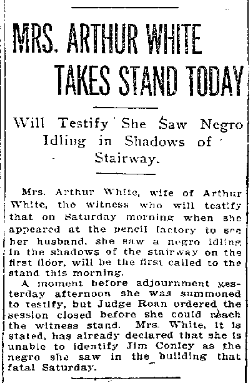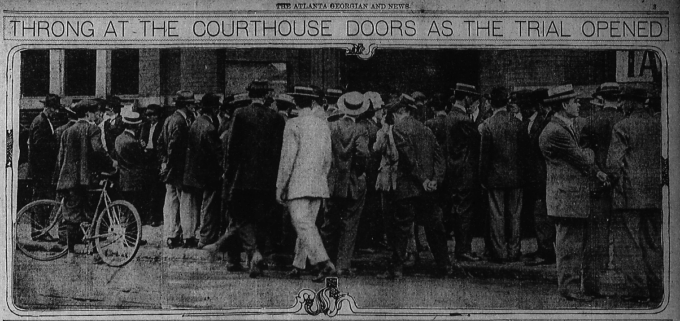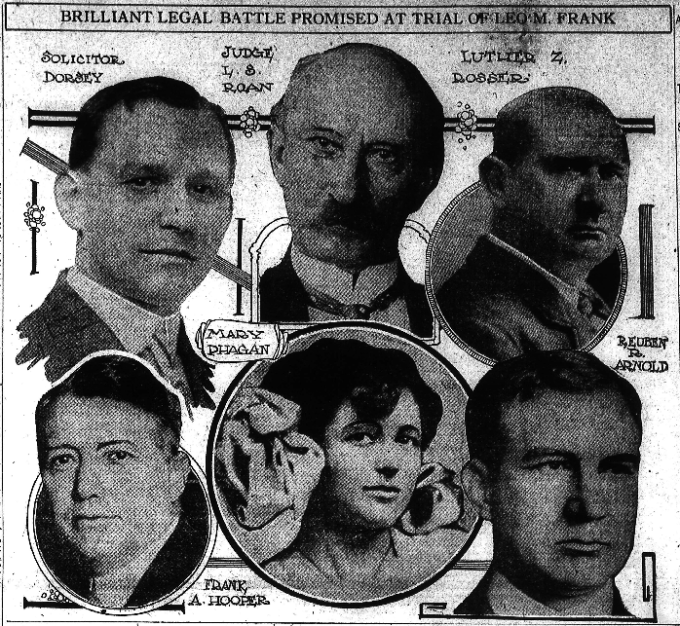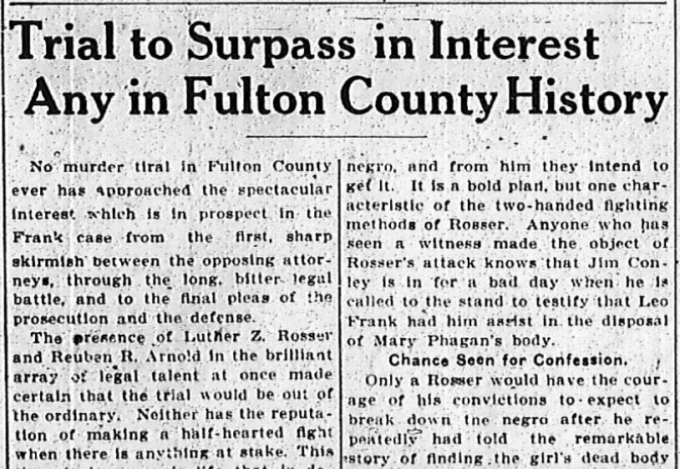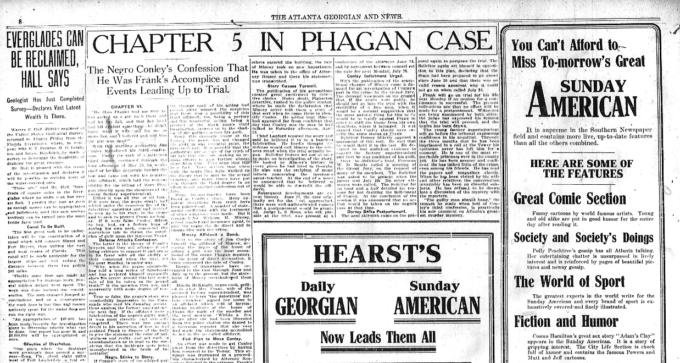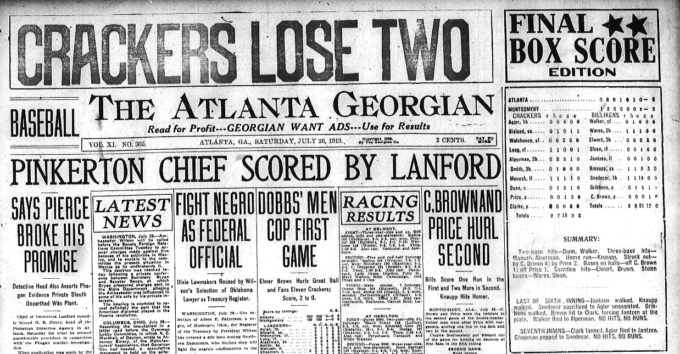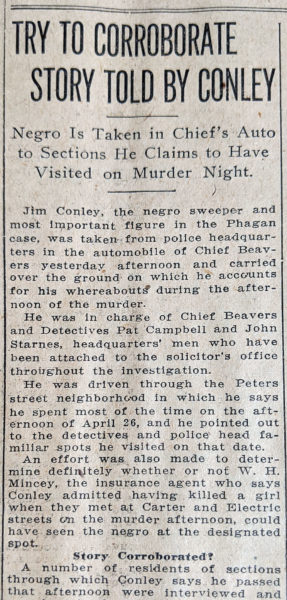Another in our series of new transcriptions of contemporary articles on the Leo Frank case.
Atlanta Georgian
August 4th, 1913
There was a murmur of excitement following the calling of Jim Conley; there was a wait of several minutes, officers having just left the police station with the negro a minute or two before he was called.
Judge Roan impatiently ordered the Sheriff to bring in the witness. A number of spectators who were crowded up too close to the jury box were moved back by the court deputies.
“The Sheriff hasn’t got Jim Conley,” said Attorney Rosser, after a statement from Deputy Sheriff Plennie Miner.
“Mr. Starnes will bring him in,” returned Solicitor Dorsey.
“See if Mrs. White has arrived,” then requested Dorsey. “She has a very young baby, and when I had her subpenaed this morning she said that she would have to send to the factory and get her husband before she could come.”
Courtroom Quiet as Conley Enters.
“You may call her later,” said Mr. Rosser, “there wont’ be any objection.”
Jim Conley was brought into the courtroom just at this time. He took the witness chair and was sworn in while in the chair. Solicitor Dorsey examined him and everyone leaned forward, while extreme quiet prevailed.

